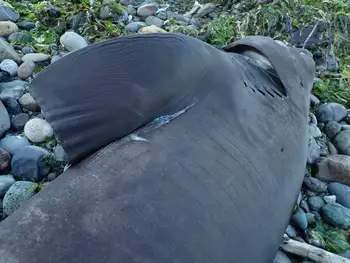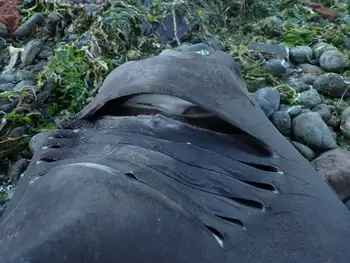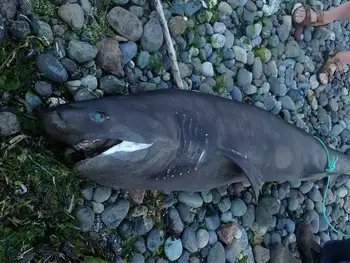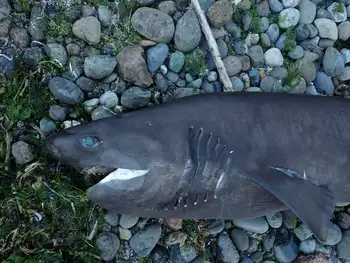Taxonomy
Animalia
Chordata
Chondrichthyes
Elasmobranchii
H. H. Hexanchus griseus
Bluntnose Sixgill SharkGray Six-gill Six-gill-shaped
The Hexanchiformes are the order consisting of the most primitive types of sharks, and numbering just seven extant species. Fossil sharks that were apparently very similar to modern sevengill species are known from Jurassic specimens. Hexanchiform sharks have only one dorsal fin, either six or seven gill slits, and no nictitating membrane in the eyes. Shark teeth similar to those modern hexanchids are known from Devonian deposits in Antarctica and Australia, as well as Permian deposits in Japan. If these are in fact hexanchids, this may be the only extant order of elasmobranchs to have survived after the Permian extinction (and by extension, the oldest extant order of elasmobranchs).
Hexanchiformes. Retrieved November, 05 2021, from en.wikipedia.org/wiki/Hexanchiformes.
Cow sharks are a shark family, the Hexanchidae, characterized by an additional pair or pairs of gill slits. Its 37 species are placed within the 10 genera: Gladioserratus, Heptranchias, Hexanchus, Notidanodon, Notorynchus, Pachyhexanchus, Paraheptranchias, Pseudonotidanus, Welcommia, and Weltonia. Cow sharks are considered the most primitive of all the sharks, as their skeletons resemble those of ancient extinct forms, with few modern adaptations. Their excretory and digestive systems are also unspecialised, suggesting they may resemble those of primitive shark ancestors. A possible hexanchid tooth is known from the Permian of Japan, making the family a possible extant survivor of the Permian-Triassic extinction. Their most distinctive feature, however, is the presence of a sixth, and, in two genera, a seventh, gill slit, in contrast to the five found in all other sharks. They range from 1. 4 to 5. 5 m (4. 6 to 18. 0 ft) in adult body length.
Hexanchidae. Retrieved November, 05 2021, from en.wikipedia.org/wiki/Cow_shark.
The bluntnose sixgill shark (Hexanchus griseus), often simply called the cow shark, is the largest hexanchoid shark, growing to 20 ft (6. 1 m) in length. It is found in tropical and temperate waters worldwide and its diet is widely varied by region. The bluntnose sixgill is a specific species of sixgill sharks, of genus Hexanchus, a genus that also consists of two other species: the bigeye sixgill shark (Hexanchus nakamurai) and the Atlantic sixgill shark (Hexanchus vitulus). Through their base pairs of mitochondrial genes COI and ND2, these three species of sixgills widely differ from one another.
Hexanchus griseus. Retrieved November, 05 2021, from en.wikipedia.org/wiki/Bluntnose_sixgill_shark.





